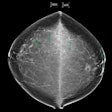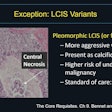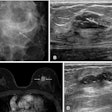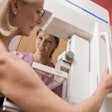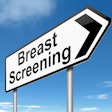Adding biological markers such as mammographic density to breast cancer risk prediction models appears to improve their effectiveness, according to research presented at the American Association for Cancer Research (AACR) meeting in New Orleans.
Improved models could help clinicians better tailor screening recommendations, noted the study group led by Dr. Xuehong Zhang, ScD, of Brigham and Women's Hospital.
Models such as Gail and Rosner-Colditz have long been used to estimate women's risk of breast cancer, and they have traditionally included risk factors such as age, family history of breast cancer, reproductive factors, body mass index, and alcohol intake. Zhang's group added biological markers such as mammographic density, genetic risk score, and levels of the hormones testosterone, estrone sulfate, and prolactin to the models. They then assessed how the added factors affected risk prediction for whether postmenopausal women not using hormone therapy would develop invasive breast cancer and estrogen receptor- and progesterone receptor-positive disease over a five-year period.
The researchers used data from 10,052 breast cancer cases and 12,575 controls of women of European ancestry taken from the Nurses' Health Study (NHS) and NHS II, which measured improvement by calculating the area under the curve (AUC), adjusting for age.
Adding mammographic density, genetic risk score, and hormone levels to the Gail model improved AUC for predicting invasive cancer by 10.8 units; for the Rosner-Colditz model, AUC improved by 6 units. For predicting the risk of developing estrogen receptor- and progesterone receptor-positive disease, adding these factors improved the Gail model AUC by 11.7 units and the Rosner-Colditz AUC by 9.4 units, according to Zhang and colleagues.
"Over 90% of postmenopausal women are not using hormone therapy, and thus the improvements we saw for this subgroup would apply to the majority of postmenopausal women in the U.S.," Zhang said in a statement released by AACR. "An important next step in this research will be to validate these initial findings in other study populations."













